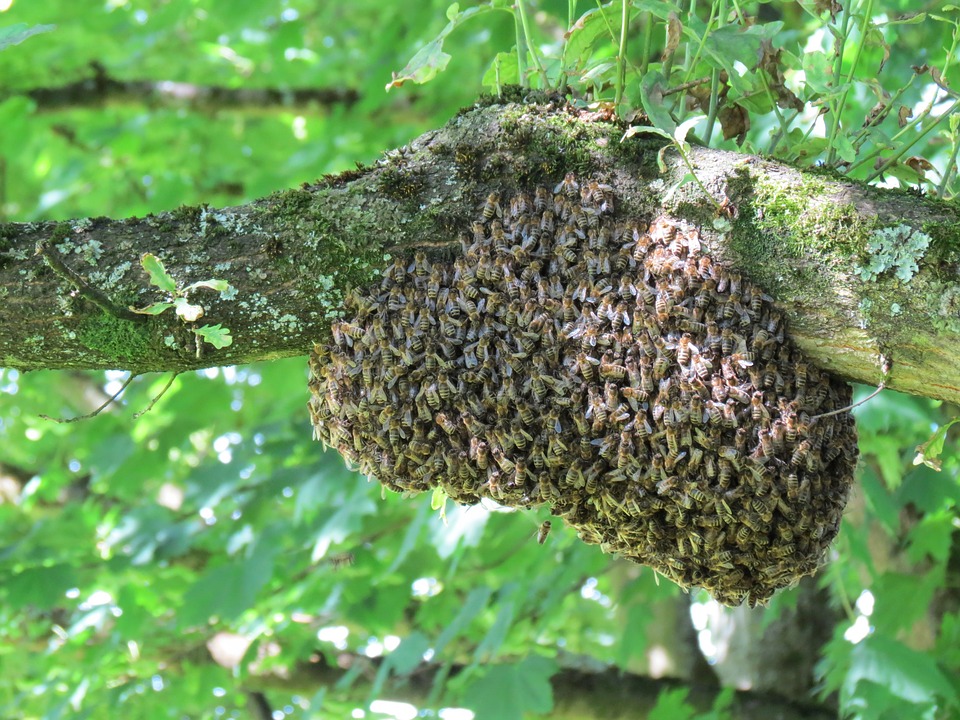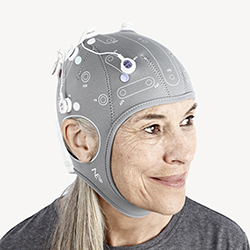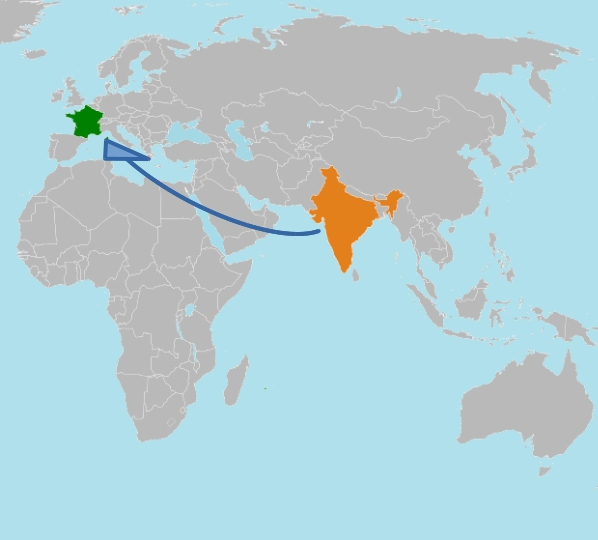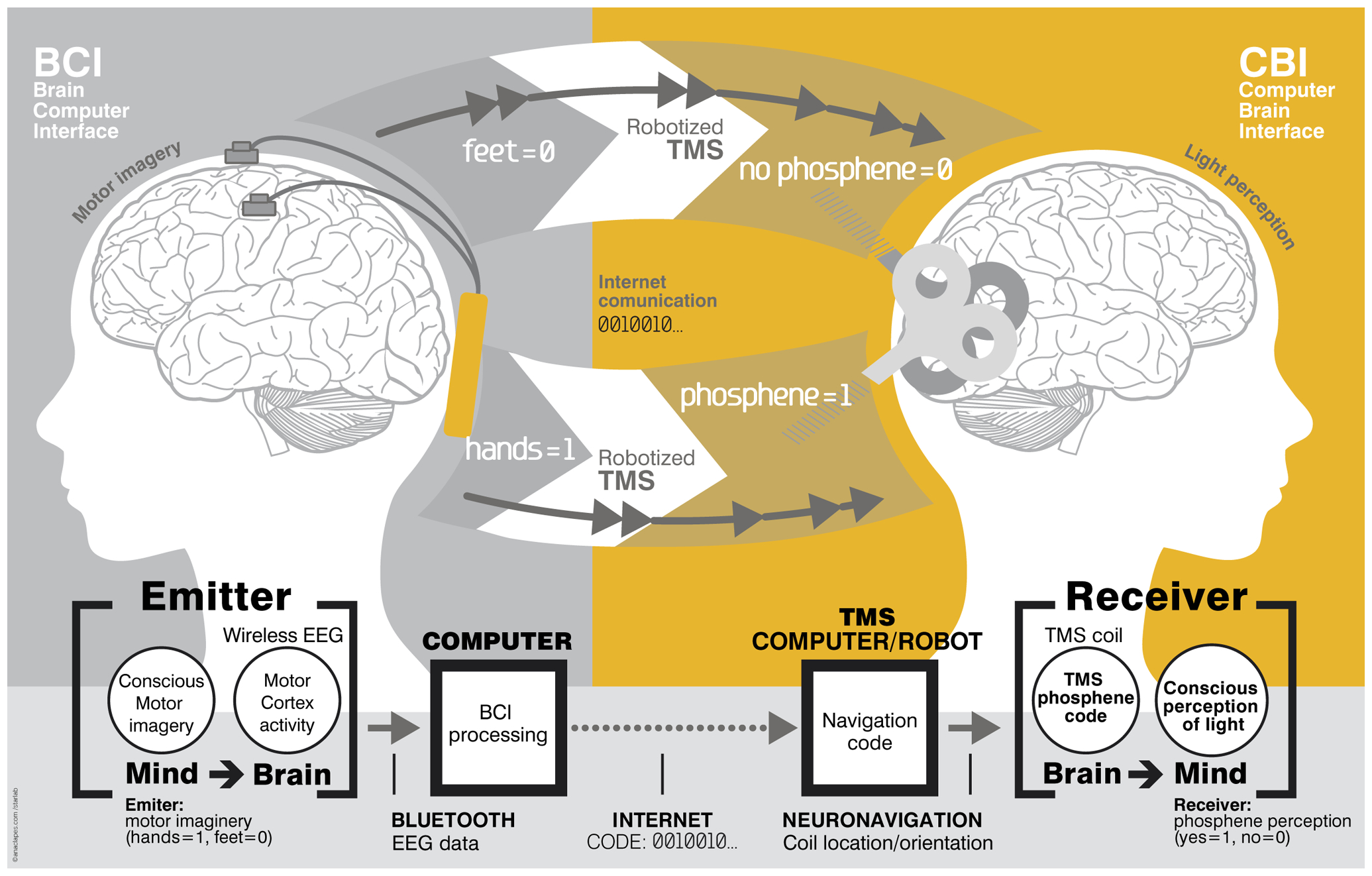The Start of the HIVE project
HIVE, or “Hyper Interaction Viability Experiments”, was a pivotal project launched in 2009 that was key for the foundation of Neuroelectrics, the spin-off arisen from Starlab. Without this project and its breakthroughs, perhaps Luminous would not be what it is today, likely owing to the technical difficulties to address some of its leitmotif questions: “What is consciousness?” “Can it be measured?”, “Can it be changed by electromagnetic brain stimulation?”
This is the story of HIVE, a project that was financed by the EU FP7 – FET Open funding scheme, back one decade ago. The main guiding question of this project was whether it is possible to create a way to communicate two brains directly, without intervention of any peripheral nervous system pathways (such as motor or sensory pathways). The answer, as it happens, eventually became a “yes”.

When the project started, technical aspects needed to be resolved first. What could be the technical means necessary to allow for such an unusual act of communication to happen? How could the brainwaves of the emitter be transformed into something understandable by a computer, and how could the computer at the receiver end convey that information, only by brain stimulation?
Different possibilities were on the table by the time the project started: the use of ultrasound, electric, or magnetic stimulation methods was considered. While at the time the two latter existed, they did in only a rather rudimentary form. In the end, it was decided to further the development of electrical stimulation systems.
Starstim and Neuroelectrics
At the time, electrical stimulation devices mainly consisted of only two electrodes contacting the head of the subject using sponges impregnated with a conducting solution. The electric source for those electrodes typically would be a battery. To build on top of the available technology, during the execution time of HIVE, a device capable of finer, more complex control would be designed.

A key modification was the introduction of more stimulation sites (entailing the use of more electrodes). This allowed for a more subtle and complex control of the stimulation. In turn, this improved the control of stimulation conditions, that now could be complemented with new features that could be introduced into the stimulation sessions: the use of waves of various frequencies, or using protocols including pulses of stimulation waves. Thanks to this development, the discipline of brain stimulation would see methodologies unknown until that point.
When the project finished, decisions had to be taken regarding the future of the developed technology: to directly commercialise it, to license it… something else? It was eventually decided to create a Starlab Spin Off: Neuroelectrics, that took off in the year 2014. Neuroelectrics would further develop the prototypes, and bring them to the market. Over time, Neuroelectrics would become a successful international company, with revenue figures over the several million Euro.
The experiments during HIVE
Returning our attention towards the project itself, technical developments indeed took up a significant amount of time and resources, but there was certainly other ongoing activity. Studies of experimental nature were also being conducted. Such experiments chiefly involved coma patients, subjects in sleep settings, or else experiments in the context of cognitive science. They and addressed diverse questions that connected to these aspects and/or conditions.
An example of one such experiment tried to prove if it is possible to generate an imbalance in the random decisions chosen by an individual. For example, while choosing “left hand” versus “right hand” randomly, is it possible to stimulate the choice of an individual beyond randomness? Is it possible to favour the choice of one hand over the other?
Neither the latter study, neither another one attempting to induce sleep by neuro stimulation cast any clear success. Happily, the same was not true for the attempts for stimulation of coma patients: 3 out of 10 patients would experience some level of consciousness enhancement as a result of neuro stimulation sessions attempting to stimulate their brain above the consciousness level of a coma.
Another success, however, was the one that caught the most media attention. It hapened some time after Neuroelectrics had yet been created, stemming from the experiment that was to conduct the proof of concept of the brain to brain communication planned in the HIVE project. This eventually resulted in the publication of an article, published in PLOS ONE, that became very cited, also in the media.

In the experiment, a person located in India would be the emitter of a binary code message, while the receptor subject was located in France. The techical means: a Brain-computer interface for the emitter and a Computer-Brain interface for the receptor. Altogether, with the computer-computer communication mediated by a medium familiar to all: the Internet.
Binary code was emitted from India in the form of zeroes and ones. The data was translated by the brain-computer (B-C) interface, travelled towards France, and there the signal was received and re-interpreted by the receiver via the computer-brain interface. The instrument used for that part of the experiment was a trans cranial magnetic stimulation device, which was at the time more advanced than electric stimulation instruments.

In practical terms, during the experiment, the emitter just had to think about moving a hand to generate the number “one”. Else, thinking of moving a foot would generate a “zero”. The receptor in France perceived this via the perception of a signal called a “phosphene”, generated by magnetic brain stimulation upon receiving the signal via the internet.
The phosphene signal is perceived by the receptor similarly as the perception of a flash of light. Yet, there is no light reception or emission involved. The detection of the phosphene signal would represent a “one”, while its absence would mean a “zero”, from which the complete message could be decoded.
By the end of the HIVE project, not only had it led to the culmination of sound successes such as the foundation of Neuroelectrics, and the creation of the devices Starstim or Enobio. Also, the proof of concept of a method for brain-computer-computer-brain communication was drawn into the spotlight of numerous international media outlets.
Regarding the other experiments, the notable breakthrough involving coma patients became grounds for further research: this was carried on into the Luminous project, eventually pushing it even further in Luminous. Luminous, which adressed many more research questions is now also coming to an end. Stay tuned for the news of Luminous end-project news and milestones in the coming weeks…!
Image credits:
Beehive picture is in the public domain and was downloaded from Pixabay.
Starstim picture was downloaded with permission from the website of Neuroelectrics.
Map highlighting France and India was downloaded and modified from Wikipedia, and is in the public domain.
Figure from original research article was licensed via an Attribution 4.0 International (CC BY 4.0) license and downloaded from PLOS ONE.
